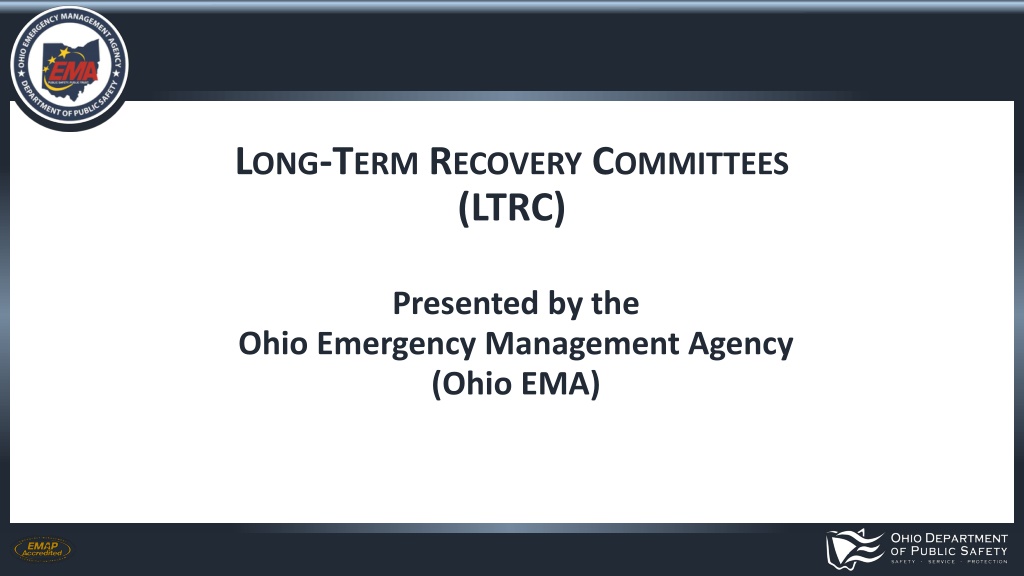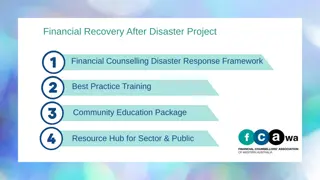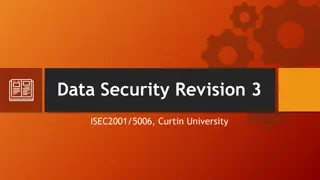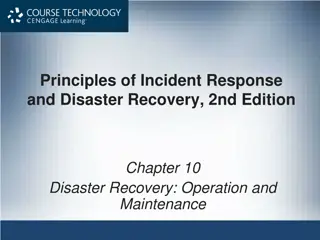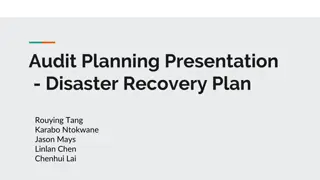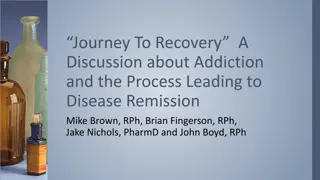Understanding Long-Term Recovery Committees in Disaster Management
Long-Term Recovery Committees (LTRCs) play a crucial role in disaster recovery efforts by focusing on meeting the essential needs of disaster-affected individuals and families through organized group efforts. The LTRCs utilize case management to maximize available assets like volunteer services, donations, and funds. Different types of disasters are discussed, along with assistance programs offered by FEMA, SBA, and individual state programs.
Download Presentation

Please find below an Image/Link to download the presentation.
The content on the website is provided AS IS for your information and personal use only. It may not be sold, licensed, or shared on other websites without obtaining consent from the author. Download presentation by click this link. If you encounter any issues during the download, it is possible that the publisher has removed the file from their server.
E N D
Presentation Transcript
LONG-TERM RECOVERY COMMITTEES (LTRC) Presented by the Ohio Emergency Management Agency (Ohio EMA) 1
LONG-TERM RECOVERY COMMITTEE (LTRC) COMMITTEE (LTRC) What is an LTRC? An organized group formed in the immediate aftermath of an event that focuses their efforts and resources on meeting the unmet, uninsured, essential needs of disaster-affected individuals and families. 2
LONG-TERM RECOVERY COMMITTEE (LTRC) LONG TERM RECOVERY COMMITTEE (LTRC) Utilizes case management of individuals and households to maximize assets (volunteer labor, donated appliances, furniture, funds, etc.) made available to the committee. Role of an LTRC 3
TYPESOFDISASTERS TYPESOF DISASTERS Presidential disaster declaration that includes Individual Assistance (FEMA IA) The Robert T. Stafford Disaster Relief and Emergency Assistance Act (the Stafford Act) US Small Business Administration (SBA) Agency-only declaration Upon the governor s discretion, State IA may also accompany the SBA disaster loan program. Non-Stafford Act events 4
FEMAINDIVIDUALS & HOUSEHOLDSPROGRAM (IHP) FEMA INDIVIDUALS & HOUSEHOLDS PROGRAM (IHP) Emergency home repair or replacement Other Needs Assistance (ONA) Grants for serious needs and necessary expenses i.e. personal property, transportation, medical/dental, funeral expenses, etc. Provides two types of assistance: Housing Assistance (HA) Grants for rental assistance 5
SBA DISASTER LOAN PROGRAM Provides loans up to: $200,000 for home repair/replacement $40,000 for personal property $2 million for businesses and PNPs for physical damages. 6
STATE INDIVIDUAL ASSISTANCE (IA) PROGRAM At the Governor s discretion Follows an SBA agency-only declaration Limited assistance for essential needs for homeowners and renters (home repair, personal property, funeral expenses) Must first apply for SBA loan assistance Requires application and home inspection 7
INDIVIDUAL ASSISTANCE DUPLICATIONOF BENEFITS (DOB) Stafford Act, Sec. 312 (a) shall assure that no such person, business concern, or other entity will receive such assistance with respect to any part of such loss as to which he has received financial assistance under any other program or from insurance or any other source. 8
INDIVIDUAL ASSISTANCE SEQUENCEOF DELIVERY Insurance/Voluntary agencies emergency assistance FEMA IHP-Housing Assistance SBA disaster loans FEMA IHP-ONA (Other Needs Assistance) for SBA eligible categories Voluntary agencies additional assistance 9
NON-STAFFORD ACT EVENTS Most events do not reach the level of a Presidential disaster declaration (FEMA) or Small Business Administration (SBA) Agency-only declaration. Impacted communities often form long term recovery committees to address serious, unmet needs of its residents. 10
ORGANIZINGA LONG TERM RECOVERY COMMITTEE (LTRC) A LTRC is a cooperative body that is made up of representatives from faith-based, non-profit, government, business and other organizations working in a community to assist individuals and families as they recover from disaster. 11
ORGANIZINGA LONG TERM RECOVERY COMMITTEE (LTRC) Suggested steps to begin the process of organizing an LTRC: 1. Planning meeting 2. Initial meeting (informational) 3. Organizational meeting 12
PLANNING MEETING-EARLY ORGANIZING PLANNING MEETING- EARLY ORGANIZING Organizing Agency(suggested): (i.e. County EMA, United Way, or American Red Cross) County EMA State Voluntary Liaison Ohio VOAD representative Who should attend the planning meeting? 13
INITIAL MEETING Who to invite Identify those who normally provide disaster services (i.e. faith-based representatives, Ohio VOAD) Local EMA Local, charitable organizations Social services Private sector People from the community with good leadership skills. Include economic and cultural diversity 14
INITIAL MEETING American Red Cross Catholic Charities Latter Day Saints Salvation Army United Way/ 211 Seventh Day Adventist Mennonites Southern Baptist Lutheran Disaster Response United Methodists St. Vincent De Paul Community Development Senior Services Veteran Services Habitat for Humanity Job & Family Services UMCOR Adventist Disaster Response Private Sector: Home Depot, Lowe s National grocery chains Walmart 15
INITIAL MEETING Introductions Talk about shared values Explain what needs to happen Discuss impact and magnitude of the disaster Present possible approaches to recovery Look to identify who are the power brokers? Who else should be at the table? Who has resources? Q & A Decide whether to move forward 16
ORGANIZATIONAL MEETING Coming together- group formation Mission statement Bylaws Membership form Fiscal matters: 501c.3 status? Open bank account; need for fundraiser? Identify a caseworker Current unmet needs of disaster survivors 17
CASE MANAGEMENT Time limited process where trained case workers partner with disaster survivors to develop a recovery plan. Case worker assists survivor with coordinating necessary services and resources to reestablish normalcy. The survivor should play an active role in their own recovery. 18
ROLEOFTHE CASE MANAGER Outreach and screening- identifying individuals and families with unmet needs Intake for case management services Assessment of need Recovery planning Action and advocacy-matching available resources to unmet needs. Tracks assistance Monitors progress Closure 19
ADVANTAGESOF LTRCS FORTHE SURVIVORS Disaster survivors have access to the agencies simultaneously. Disaster survivors have the benefit of collective creative problem-solving skills. Disaster survivors benefit from quick decision- making and commitments. 20
OHIO VOAD Mission: To bring together voluntary organizations Active in disaster services and foster effective response to the people in time of disaster through: Cooperation Communication Coordination Collaboration 21
OHIO VOAD Values: To provide care and compassion for all people. To provide the basis for a nurturing environment in which disaster response agencies will flourish. To encourage best practices and mutual accountability in operational synergy. To accomplish work in a respectful, non-judgmental, and non-discriminatory manner. 22
OHIO VOAD Values (cont.) To focus on building trust, mutual respect, and equal partnership of community service providers. To provide hope, make a difference, and offer opportunities for true collaboration. To adhere to the National VOAD standards of conduct and service delivery. 23
